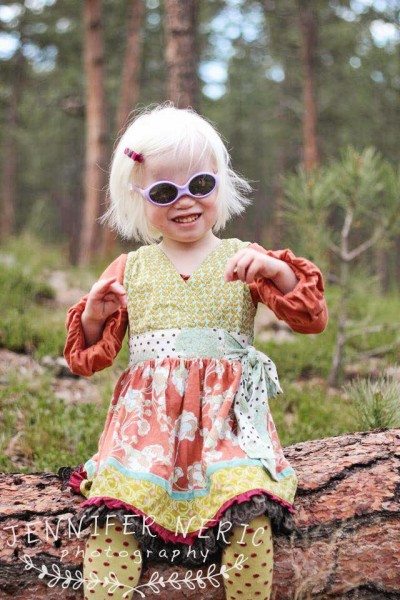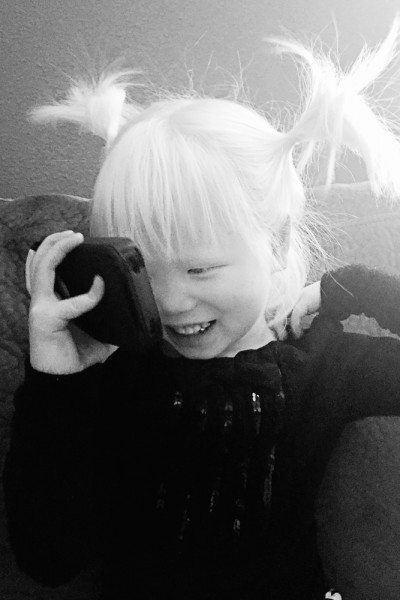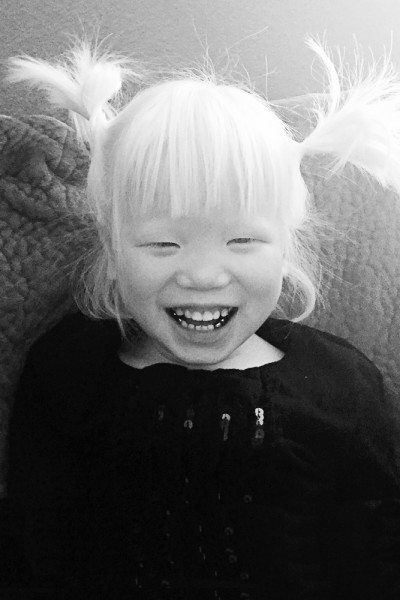February: Heart
March: Blood Conditions
April: Central Nervous System
May: Vascular System
June: Orthopedic
July: Craniofacial
August: Infectious
September: Skin Conditions
October: Developmental
November: Urogenital
December: Sensory System
On this last day of 2015, we share our last family story of the year – the 64th story shared since the January – bringing the total number of family stories shared here on NHBO to 190. What a year.
…………………………….
In November 2013 our family of six had begun the process to adopt a little sister from China. We started our homestudy process in February 2014 and came across a sweet little girl’s photo on our agency’s photolisting.

We had listed albinism as a medical condition we were open to, but it wasn’t common to see a younger girl with albinism with our agency. I placed a call and asked for her file so that my husband and I could review her information. We instantly fell in love! We turned in our request for pre-approval for Emersyn and received official notification from China on February 12. The next few months seemed to fly by…..we actually were making arrangements to move from the Seattle area to Colorado Springs and were busy researching resources that our daughter would need.
Albinism is a congenital (genetic disorder that one is born with) disease that affects a person’s eyes, hair (including eyebrow and eyelashes) and skin due to a lack of pigment. We did not know what Emersyn’s vision quality would be when she came home as vision testing is not common in China. We needed to be prepared for a child who could have severe vision needs. We packed toys that had lights and sounds and would give her sensory stimulation for our trip. The lack of pigment in hair and skin are relatively easy to manage – year round hat wearing and quality sunscreen and long sleeves or wearing UPF clothing.

The lack of pigment in the eyes can be much more of an issue. In Emersyn, the lack of pigment causes her eyes to appear blue. During her intrauterine development, as explained by her pediatric ophthalmologist, she was lacking a protein as her eye structures were forming. This caused many of her eye structures to be underdeveloped such as her retina, her eye muscles, her optic nerve, etc. He was able to see this when he examined her.
Because of the lack of pigment in her pupil, she is unable to filter light as well as most of us, and she is very sensitive to even normal levels of light and wears sunglasses except at night. Her visual acuity is estimated at about 20/400 which is technically categorized as legally blind. Her eyes involuntarily move rapidly back and forth also known as “nystagmus” which is very common in children with albinism.
The nystagmus was even more prevalent when she first came home. We believe this was due to the fact that she feeling very stressed. She can focus best if she tilts her head down and looks forward which is known as her “null” point. So sometimes it appears as if she isn’t looking at you but she is simply trying to focus. She also has to hold things about six inches away from her face in order to see.

There is no cure or surgical correction available for the visual issues that accompany albinism. Fortunately, there are some resources and accommodations that we have been able to make for our daughter. We did get her prescription glasses with a tint, as this does correct her vision somewhat and help with her nystagmus. She also receives vision therapy through the school district in her preschool class once a week as part of her IEP (individual educational plan).
Some children with albinism can also qualify for braille instruction or O & M training (orientation and mobility training, i.e. walking cane). The goal is to help her see her world as big as possible!
Emersyn’s potential is limitless! We adore her and will support her in achieving living her life to its fullest. Her needs have been very manageable, and we couldn’t have been more blessed.

Parents of a child with a disability (legally blind would qualify) should consider applying for a National Parks Access Pass. An Access Pass grants lifetime free access to the pass holder and car occupants into national parks.
To qualify for an Access Pass you must be a U.S. citizen or permanent resident of any age that has been medically determined to have a permanent disability which severely limits one or more major life activities. A permanent disability is a permanent physical, mental, or sensory impairment that substantially limits one or more major life activities, such as caring for oneself, performing manual tasks, walking, seeing, hearing, speaking, breathing, learning, and working.
– guest post by Alison

























I am so proud of your commitment to both your daughters!
So much appreciate all the educational information. Knowledge is key to understanding and insuring that Em reaches her potential. The love of her family has been monumental in her successes and this sweet child will go far in life .
She’s darling! Thank you so much for sharing your story. <3
Alison and Brad, you are awesome parents. The whole world can be proud of you, and Emersyn and Paige are very, very fortunate to be growing up surrounded by your love.